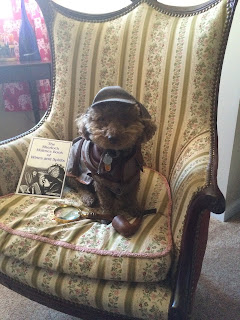Marcus Reno
Frederick Benteen
In 1954, a small book entitled Kick the Dead Lion: A Casebook of the Custer Battle appeared. Some
seventy-five years after the Battle of the Little Bighorn, pro-Custer and
anti-Custer partisans continued to lob incendiary charges at Reno and Benteen
on the one hand and at Custer on the other.
This book repeats the standard pro-Custer line in a venomous and
emotionally charged voice: Reno was a coward, a drunkard, and a man of low
character whose cowardice led to the Custer disaster. Benteen was jealous, peevish, and
insubordinate. His failure to obey
Custer’s orders was criminally negligent.
There would be little of interest in this book except that, for the
first time, DuBois challenges the underlying evidence upon which anti-Custer
historians such as Frederic Van De Water, E.A. Brininstool and Fred Dustin
relied, namely the testimony of the first hand witnesses. DuBois challenges the motivations of the
witnesses. “Much of the testimony taken at the Reno Court of Inquiry was not,
as tradition demands, ‘The whole truth and nothing but the truth.’ Especially is this true of statements made
under oath by Captain Frederick W. Benteen, Major Marcus Reno and a select
group of subordinate officers who felt some inexplicable obligation either to
actually change their testimony or to phrase it in such a manner as to cast a
different implication on Reno’s various actions.” (DuBois, 46)
DuBois goes on to take issue with the so called “Enlisted Men’s
Petition” (which lauded the actions of Reno and Benteen and called for their
immediate promotion), cited so tellingly by Graham and Van De Water in
vindication of Reno and Benteen.
According to DuBois, the former Superintendent of the then Custer
Battlefield National Monument, Major Edward S. Luce, submitted the signatures
on the petition together with a photostatic copy of a payroll of the 7th
Cavalry to the Federal Bureau of Investigation (FBI) for a comparison of
handwriting. In a November 1954 report
the FBI concluded that in the case of 79 of the 236 signatures on the petition,
“…variations were noted which suggest in all probability that the signatures on
the petition are forgeries.”(DuBois, 49)
DuBois goes on to make the case that Reno and Benteen conspired to
introduce exculpatory evidence into the record almost immediately after the
battle. On July 4, 1876, only nine days
after the battle, Reno and Benteen concocted the Enlisted Men’s Petition. “Only an enormous sense of guilt would compel
Reno and Benteen to attempt to pre-arrange the evidence in advance of any
possible inquiry, and a complete vindication by the enlisted men would weigh
heavily in any decision that might be made later.” According to DuBois it was
probably Benteen’s first sergeant Joseph McCurry who circulated the petition and
in all probability forged signatures when necessary. DuBois concludes, “The reader must bear in
mind that these allegations are hypothetical even though they have basis in
reason.” (DuBois, 54)
DuBois introduced the concepts of “cover up” and “manufactured evidence”
into the story of the Battle of the Little Bighorn at precisely that time in
American history when conspiracy explanations had come into vogue. For a period of years in the early 1950s
Senator Joseph McCarthy launched a series of widely publicized (but largely
unsubstantiated) charges of communist infiltration into the State Department,
the Truman administration, the Voice of America and the United States
Army. In response to McCarthy's initial charges with regard to alleged communists
within the State Department, Democratic Senator Millard Tydings convened
hearings. The Tydings Committee
concluded that the individuals on McCarthy's list were neither communists nor
pro-communist, and labeled McCarthy's charges a “fraud and a hoax”. The Committee’s report said that the result
of McCarthy's actions was to “confuse and divide the American people…to a
degree far beyond the hopes of the Communists themselves”. Republicans
responded that Tydings was guilty of “the most brazen whitewash of treasonable
conspiracy in our history”.

Views of Custer have changed over
succeeding generations. Custer has been portrayed as a callous egotist, a
bungling egomaniac, a genocidal war criminal, and the puppet of faceless
forces. For almost one hundred and fifty years, Custer has been a Rorschach
test of American social and personal values. Whatever else George Armstrong Custer
may or may not have been, even in the twenty-first century, he remains the
great lightning rod of American history. This book presents portraits of Custer
and the Battle of the Little Bighorn as they have appeared in print over
successive decades and in the process demonstrates the evolution of American
values and priorities.
Gifts for Dogs and Dog Lovers





















